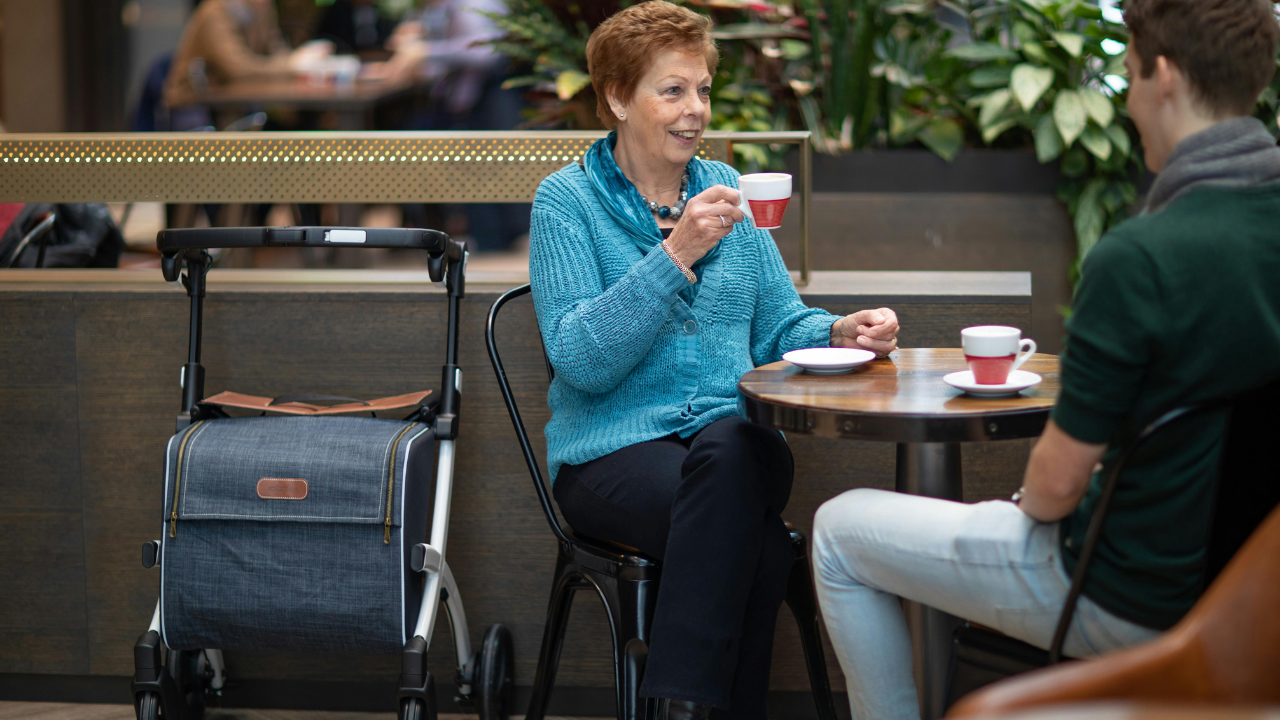What Is The Purpose Of Upright Walkers For Seniors?
What Is The Purpose Of Upright Walkers For Seniors?
As seniors age, maintaining mobility becomes one of the most significant challenges they face. Many older adults experience difficulty with balance, stability, and strength, which can lead to falls and a decline in independence. For those who struggle with walking, the use of assistive devices can offer much-needed support, and upright walkers are becoming a popular choice for improving mobility and overall well-being. These walkers are specifically designed to provide greater stability and posture control, which can enhance the senior’s quality of life in numerous ways.
Upright walkers offer several advantages over traditional walkers, especially when it comes to posture, comfort, and ease of use. But what exactly is the purpose of these devices, and why are they gaining popularity among seniors? Understanding how upright walkers work, their benefits, and the factors that make them a great choice for aging adults can help caregivers and seniors make informed decisions about their mobility needs.
Enhancing Posture and Reducing Strain
One of the most important benefits of upright walkers is the improvement they bring to posture. Traditional walkers, especially those with a hunched or bent-over design, can cause seniors to slouch or lean forward, which can exacerbate back pain, neck stiffness, and overall discomfort. The design of upright walkers, however, encourages a more natural, upright posture, which can help reduce strain on the spine and muscles.
Seniors who use upright walkers benefit from a more ergonomic design that supports better body alignment. The handles are positioned at a height that allows the user to stand tall, with minimal bending or stooping, which helps reduce the risk of developing back problems or worsening existing issues. For many seniors, maintaining proper posture is key to preventing falls, reducing the risk of injury, and improving their overall mobility.
The upright design also allows seniors to maintain a more balanced position while walking, which further contributes to stability. This improved posture encourages better body mechanics, reducing muscle fatigue and discomfort that might arise from using other types of walkers. Ultimately, a better posture translates to greater confidence and independence in daily activities, allowing seniors to move with ease and comfort.
Increased Stability and Safety
Stability is a major concern for seniors, especially when it comes to walking. As aging adults lose muscle mass and experience weakened bones, maintaining balance becomes more challenging. The risk of falling increases with age, and falls can lead to serious injuries, particularly fractures or hip injuries. This is where upright walkers provide significant benefits—by offering greater stability and support during movement.
Unlike traditional walkers, which require seniors to lift them with each step, upright walkers are designed with a more stable base. The structure of these walkers provides better ground contact and balance, helping seniors feel more secure as they move around. The additional support from the upright design helps seniors maintain a consistent gait, which minimizes the likelihood of stumbling or losing balance. This added stability is essential for seniors with mobility issues, as it reduces the fear of falling and encourages more confident movement.
Many upright walkers are also equipped with larger wheels, making it easier for seniors to navigate uneven terrain or obstacles like curbs or door thresholds. This ensures that seniors can continue to be active in their daily lives, whether they are walking through their homes or going for walks outside. The combination of stability, smooth maneuverability, and increased safety gives seniors the confidence to remain mobile without the constant worry of a fall.
Providing Independence and Freedom
As seniors face the challenges of aging, maintaining independence becomes one of their top priorities. Mobility aids like upright walkers can significantly enhance a senior’s ability to live independently by improving their ability to walk safely and with greater ease. These walkers help seniors perform everyday activities such as walking to the kitchen, going to the bathroom, or running errands—all while minimizing the risk of injury.
For seniors with mobility issues, using an upright walker allows them to retain control over their movements without relying on others for constant assistance. The ability to move around freely within their home or community boosts confidence and provides seniors with the freedom to live life on their terms. This independence is crucial for preserving a sense of self-worth and mental well-being, particularly for those who may struggle with feelings of isolation or dependency as they age.
The psychological benefits of increased mobility cannot be understated. Many seniors who use traditional walkers or canes feel self-conscious or embarrassed by their reliance on assistive devices. However, upright walkers offer a more streamlined and modern design that may make users feel more comfortable and dignified. This enhanced sense of independence and confidence can have a positive impact on their overall mental health and social engagement.
Facilitating Physical Activity and Exercise
Regular physical activity is essential for seniors to maintain strength, flexibility, and overall health. However, for seniors with mobility challenges, exercise can often seem daunting or out of reach. Upright walkers provide the necessary support to engage in physical activities that might otherwise be difficult or unsafe. These devices help seniors maintain an active lifestyle by allowing them to walk longer distances, participate in light exercises, and enjoy outdoor activities without risking injury.
The stability and comfort provided by an upright walker make it easier for seniors to engage in physical exercise, whether it’s walking, stretching, or even gentle exercises like tai chi or yoga. With the added support of the walker, seniors can exercise safely while improving their endurance, balance, and muscle strength. As a result, upright walkers not only enhance mobility but also play a role in preventing further decline in physical health. This increased activity is vital for combating issues such as muscle weakness, joint stiffness, and overall frailty.
Being able to engage in exercise also improves cognitive health. Physical activity has been shown to reduce the risk of cognitive decline and promote mental clarity in seniors. When seniors are able to move more freely and exercise regularly, they are not only benefiting their physical health but also supporting their cognitive function and emotional well-being.
Conclusion
Upright walkers are a game-changer for seniors who are struggling with mobility issues. These devices provide the necessary support to enhance posture, improve balance, and offer stability, all while boosting confidence and promoting independence. The increased stability offered by upright walkers allows seniors to move freely without the constant fear of falling, while the ergonomic design helps reduce strain and discomfort. Moreover, the ability to engage in physical activity and exercise with the help of an upright walker ensures that seniors can maintain their health and mobility for years to come.
By providing both physical and emotional benefits, upright walkers play a critical role in improving the quality of life for seniors. These devices are not just a tool to aid in walking but a pathway to greater independence, safety, and well-being. As seniors embrace these walkers, they regain the freedom to live active, fulfilling lives while preserving their dignity and sense of self-worth. For caregivers and families, the decision to invest in an upright walker is an investment in the senior’s future, enabling them to enjoy a greater level of comfort, mobility, and independence as they age.

